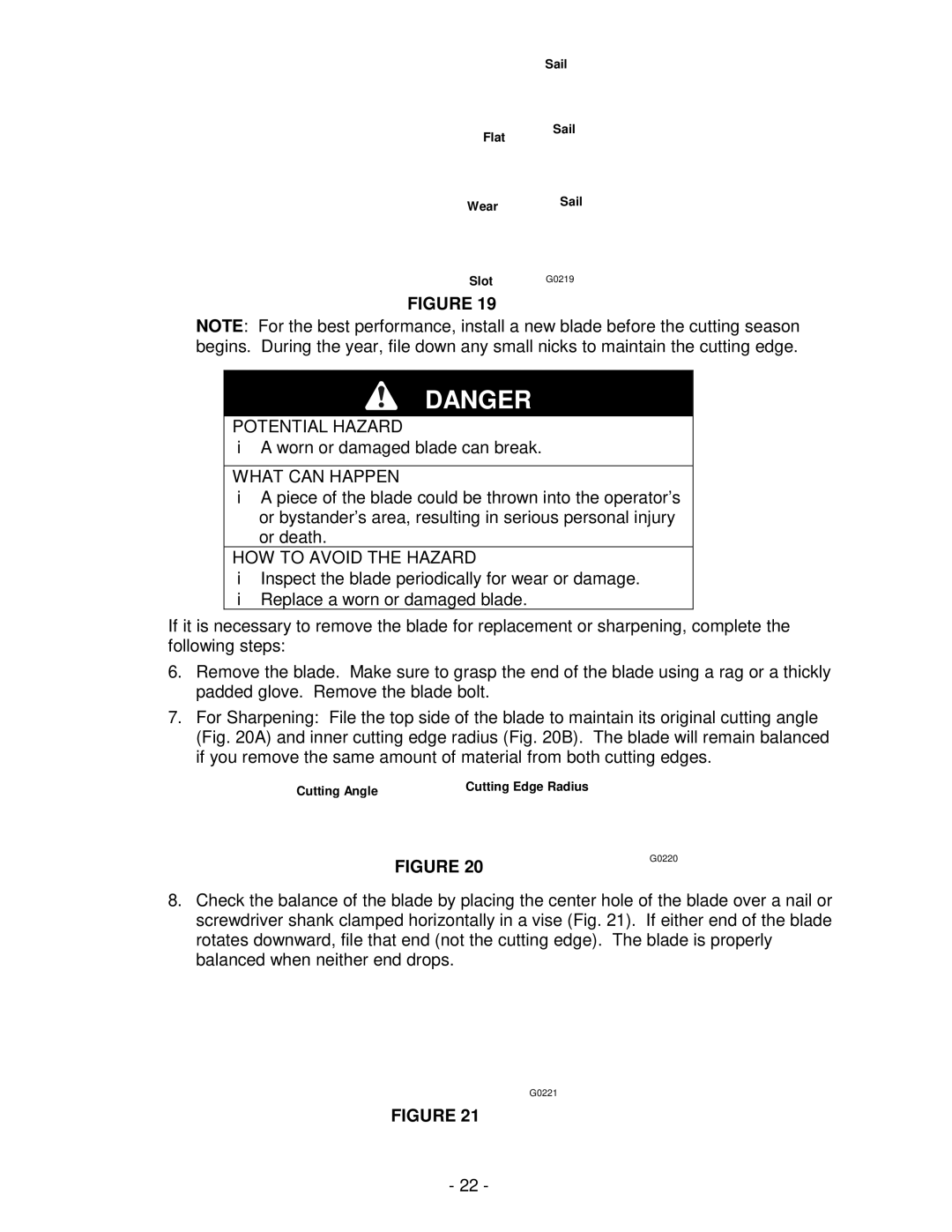
Sail
Flat Sail
Wear Sail
Slot G0219
FIGURE 19
NOTE: For the best performance, install a new blade before the cutting season begins. During the year, file down any small nicks to maintain the cutting edge.
DANGER
POTENTIAL HAZARD
♦A worn or damaged blade can break.
WHAT CAN HAPPEN
♦A piece of the blade could be thrown into the operator’s or bystander’s area, resulting in serious personal injury or death.
HOW TO AVOID THE HAZARD
♦Inspect the blade periodically for wear or damage.
♦Replace a worn or damaged blade.
If it is necessary to remove the blade for replacement or sharpening, complete the following steps:
6.Remove the blade. Make sure to grasp the end of the blade using a rag or a thickly padded glove. Remove the blade bolt.
7.For Sharpening: File the top side of the blade to maintain its original cutting angle (Fig. 20A) and inner cutting edge radius (Fig. 20B). The blade will remain balanced if you remove the same amount of material from both cutting edges.
Cutting Angle | Cutting Edge Radius |
|
|
| |
| FIGURE 20 | G0220 |
|
|
8.Check the balance of the blade by placing the center hole of the blade over a nail or screwdriver shank clamped horizontally in a vise (Fig. 21). If either end of the blade rotates downward, file that end (not the cutting edge). The blade is properly balanced when neither end drops.
G0221
FIGURE 21
- 22 -
